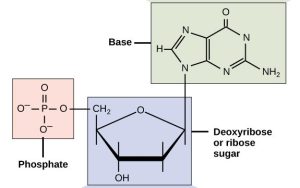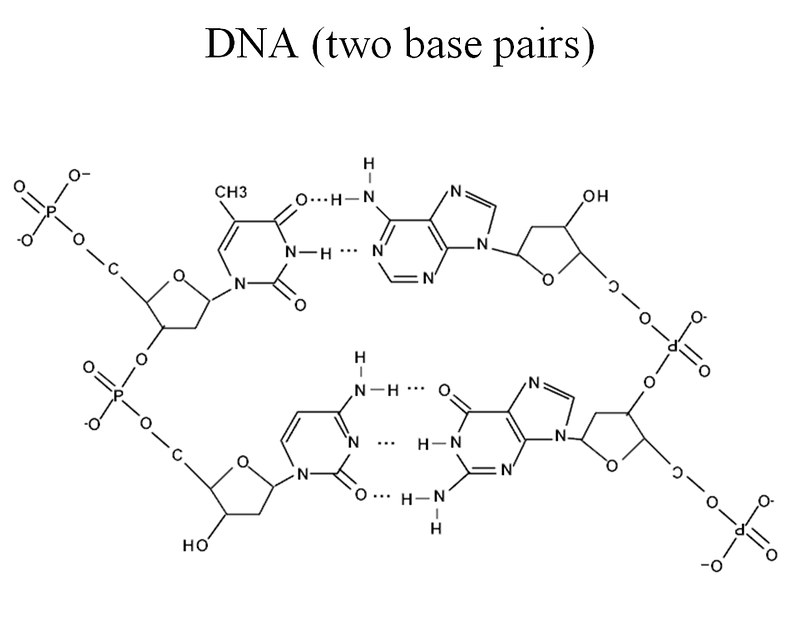Wrap-Up Questions
1. What are the three main functional groups in a nucleotide?
2. What functional group makes the DNA molecule an acid?
3. What charge do DNA and RNA carry in the cell?
4. Name three chemical differences between the structures of DNA and RNA.
5. In the nucleotide structure below, circle the 5’ carbon. Draw a square around the 3’ carbon.

6. 10% of the nucleotides in a double-stranded DNA are thymine. Use Chargaff’s rules to determine the percentage of C, G, and A.
7. Sort these nitrogenous bases into purines and pyrimidines: Cytosine, Guanine, Uracil, Adenine, Thymine.
8. If one strand of a DNA molecule has the sequence 5’CGGAGT3’, what is the sequence of the second strand? Be sure to label the 5’ and 3’ ends.
9. Fill in the blanks. The most common form of DNA in a cell is __DNA. This form of DNA is a _______-handed helix.
10. In the image of DNA molecular structure in Figure 18, find and label the 5’ and 3’ ends of each strand. Find and label and the bases adenine, guanine, cytosine, and thymine.

11. Name the four histone proteins that are found in a nucleosome core.
Science and Society
12. Nobel Prizes are not awarded posthumously, but they are also not awarded to more than three individual researchers at a time. If Rosalind Franklin had lived, who should have won the Nobel Prize for DNA structure? Whose contributions – Watson, Crick, Franklin, or Wilkins — “count most”? In your response, use outside sources as references to justify your opinion.
Media Attributions
- Question 5 Figure © Adapted from OpenStax Biology is licensed under a CC0 (Creative Commons Zero) license
- DNA molecular structure © llen Gathman, via Flikr. is licensed under a CC BY-SA (Attribution ShareAlike) license

